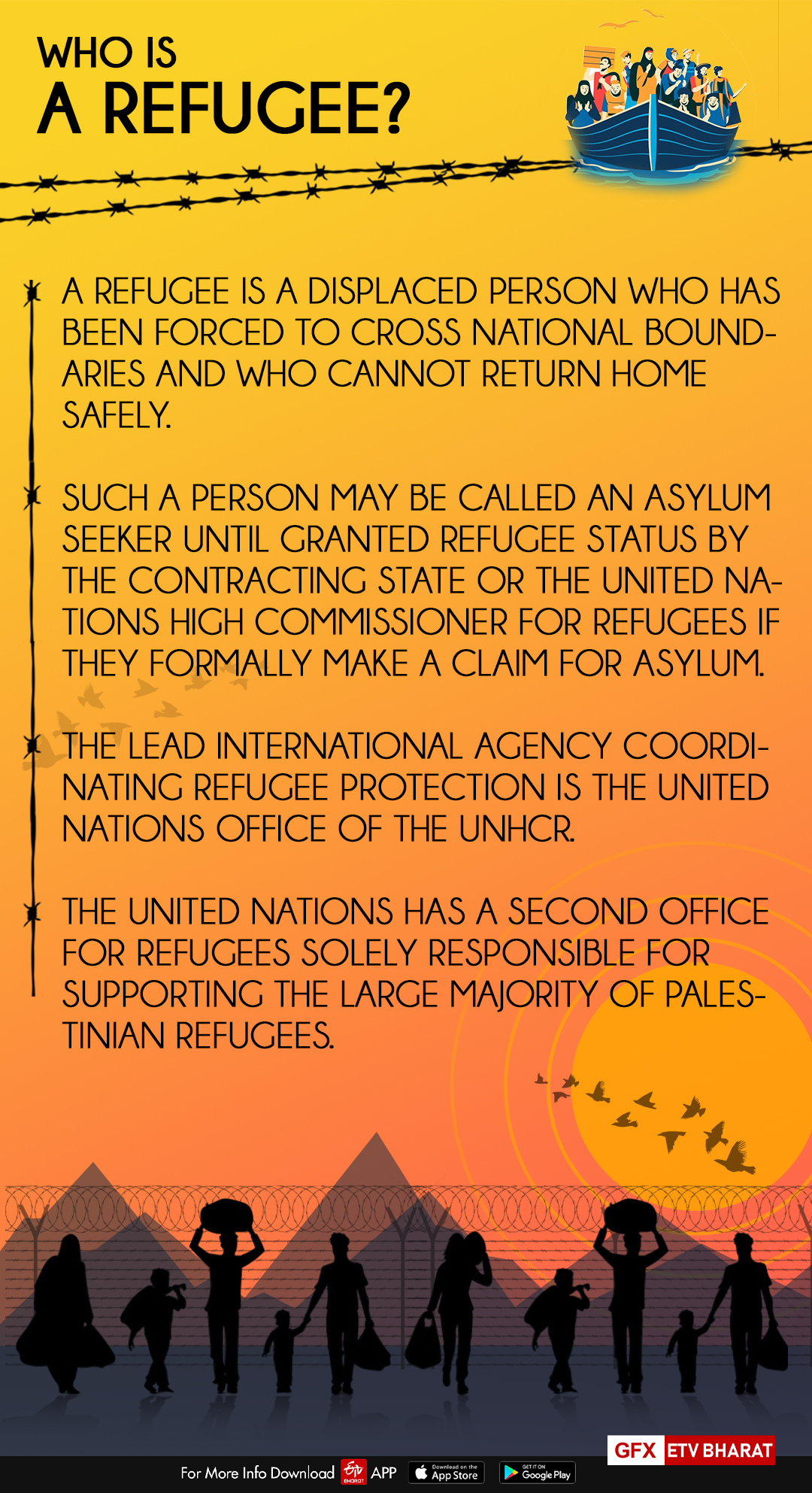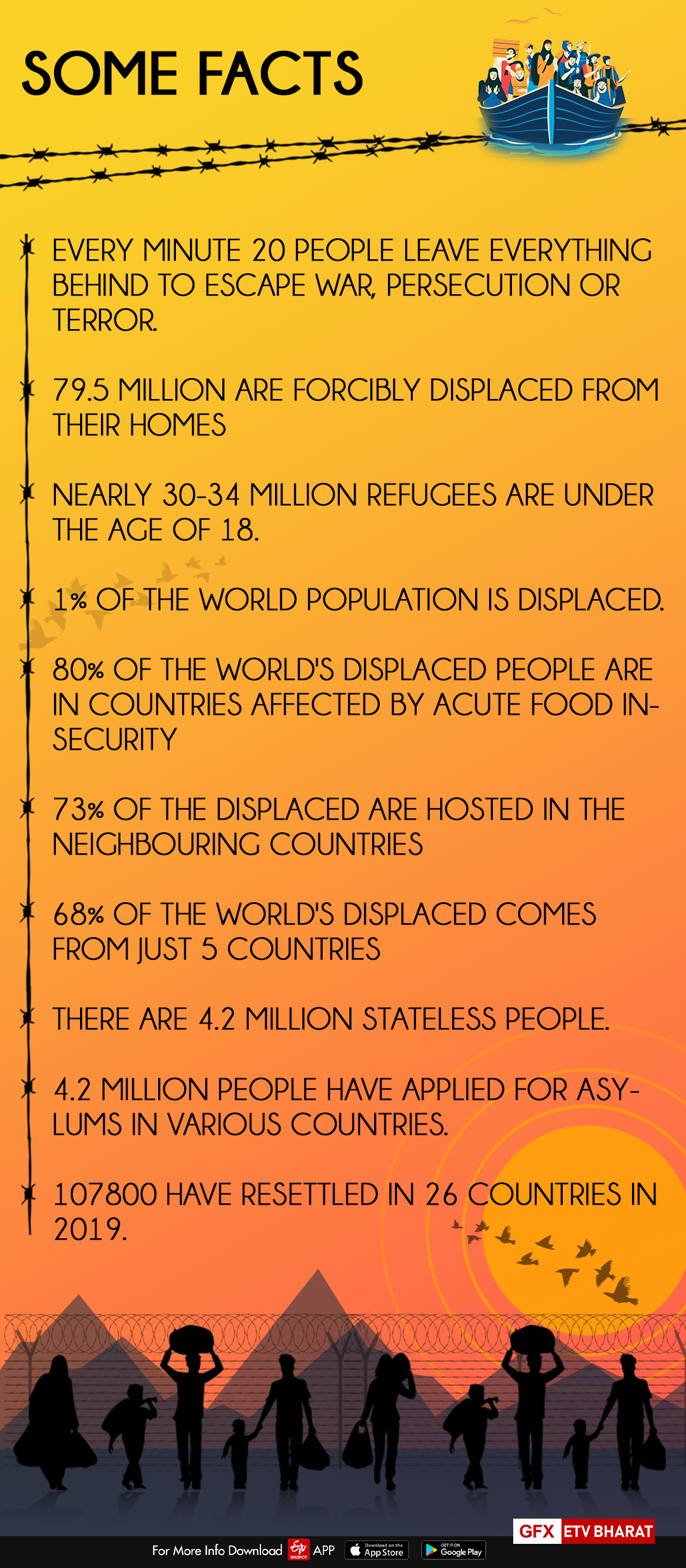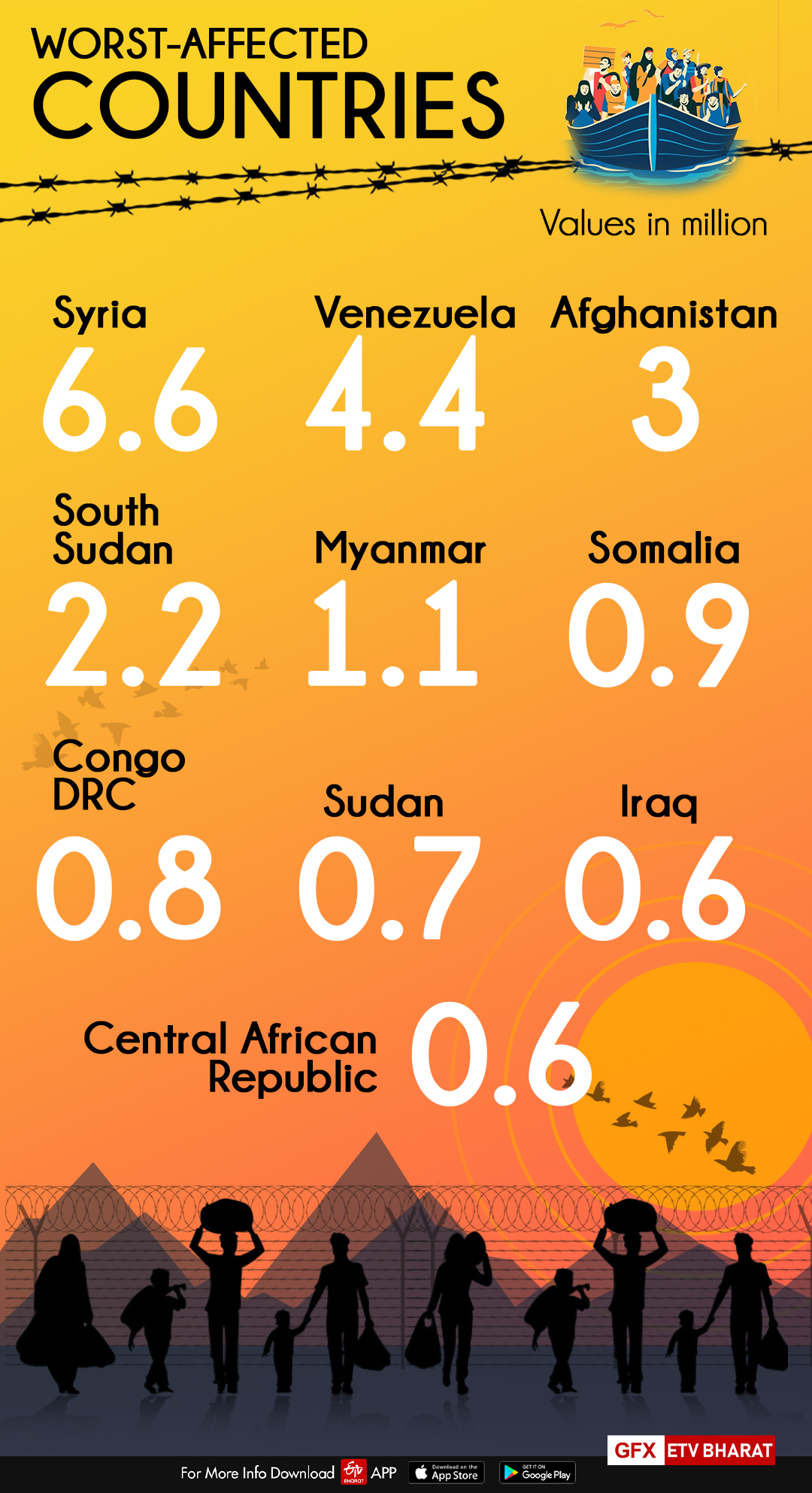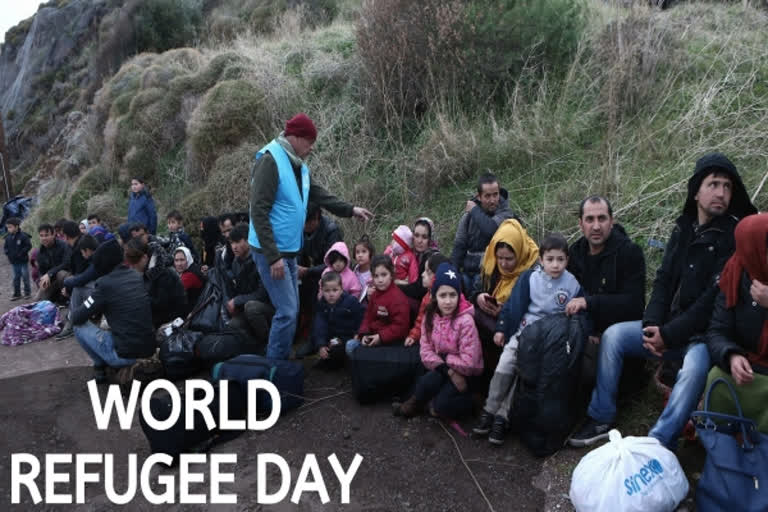Hyderabad: Every year world Refugee day is celebrated on 20th June to recognize the plight of refugees around the world, and work toward long-term solutions for them. World Refugee Day throws light on the rights, needs and dreams of refugees, helping to mobilize political will and resources so that they not only survive but also thrive. While it is important to protect and improve the lives of refugees every single day, international days like World Refugee Day help to focus global attention on the plight of those fleeing conflict or persecution. Many activities held on World Refugee Day create opportunities to support refugees. According to the UNHCR, more than 70 million have been forced from their homes to escape war, persecution, terror, or disasters.

Who is a Refugee?
A refugee, generally speaking, is a displaced person who has been forced to cross national boundaries and who cannot return home safely. Such a person may be called an asylum seeker until granted refugee status by the contracting state or the United Nations High Commissioner for Refugees (UNHCR) if they formally make a claim for asylum.
The lead international agency coordinating refugee protection is the United Nations Office of the UNHCR.
The United Nations has a second Office for refugees, the United Nations Relief and Works Agency (UNRWA), which is solely responsible for supporting the large majority of Palestinian refugees.
World Refugee Day
World Refugee Day was held globally for the first time on June 20, 2001, commemorating the 50th anniversary of the 1951 Convention relating to the Status of Refugees. It was originally known as Africa Refugee Day, before the United Nations General Assembly officially designated it as an international day in December 2000.
Also read: Lockdown Recipes: This delightful ‘desi’ version of milkshake will leave you drooling
Theme 2020- Every Action Counts

The COVID-19 pandemic and the recent anti-racism protests have shown the importance of fight for a more inclusive and equal world: a world where no one is left behind. It has never been clearer that all of us have a role to play in order to bring about change. Everyone can make a difference.
Refugees in India
According to a UNHCR report in 2017, India is host to 2,00,000 refugees. These refugees hail from countries like Myanmar, Afghanistan, Somalia, Tibet, Sri Lanka, Pakistan, Palestine and Burma, to name a few. The UNHCR even commended India on its handling of the refugee crisis, saying that it is a model for other countries to emulate. However, India is not a signatory of the 1951 Refugee Convention.
When the Convention was first proposed to the members of the UN after the end of the Second World War, India saw it as another cold war strategy. India’s stance was described by Rajeev Dhavan in an article in The Hindu: “―It (Convention) was seen as Euro-centric and, essentially, anti-Communist. Indeed, in 1953, India’s Foreign Office (through RK Nehru) told the office of the United Nations Commissioner for Refugees (UNHCR) that the global refugee policy was essentially part of the Cold War. It took years for the Convention of 1951 to be amended by the Protocol of 1967.”

Post-Independence India was trying to stay neutral and hence did not sign the Convention at the time. Although there are no official reasons for India’s abstinence from the law, one of the possible reasons could be the definition of the word ‘refugee’ in the Convention. It constricts the causes that lead to people becoming refugees to violations of social and political rights or persecution on the basis of race, religion and nationality.
Also read: Fire continues to rage at gas well in Assam's Tinsukia
Major refugee influx into India
Tibetans- The next major movement of refugees towards India happened almost a decade after Partition, in 1959, when the Dalai Lama, along with more than 100,000 followers, fled Tibet and came to India seeking political asylum. Granting asylum to them on humanitarian grounds proved costly to India, earning the ire of the Chinese government. The Tibetan refugees settled across northern and north-eastern Indian states, and the seat of the Dalai Lama, the spiritual as well as the political leader of the Tibetan community, was established in Dharamshala, Himachal Pradesh.The Tibetan government in exile operates from there to this day.
Bengali refugees- The next major refugee crisis happened during Bangladesh's war of independence in 1971, when millions of refugees migrated from the country to India, fleeing the conflict between the Pakistani army and Bangladeshi forces. This led to a sudden spike in population in states bordering Bangladesh, and it became increasingly difficult for the government of India to ensure food security. According to some estimates, more than 10 million Bangladeshi refugees escaped in 1971 and took shelter in India. Furthermore, the constant tussle between the local communities and Bangladeshi refugees today often sparks violence, resulting all too often in deaths. The conflict is fiercest in a number of north-eastern states, such as Assam, Tripura and Manipur. The local communities and tribal groups have alleged that refugees from Bangladesh and the continuous flow of illegal immigrants have led to a change in the social demography of that area, thereby making the locals a minority in their homeland. This was one of the primary reasons behind the Kokrajhar riots in Assam in 2012, which saw the deaths of more than 80 people.
Sri Lankan Tamils- Mostly these refugees, who number over a million, settled in the state of Tamil Nadu as it is nearest to Sri Lanka and since it was easier for them, as Tamils, to adjust to life there. More than 1.34 lakh Sri Lankan Tamils crossed the Palk Strait to India between 1983 and 1987 during the first inflow. In three more phases, many more refugees entered India. The war-torn Sri Lankans sought refuge in southern India. More than 60,000 refugees are currently staying in 109 camps in Tamil Nadu alone. A large number of Sri Lankan Tamils still live in what began as makeshift refugee camps decades earlier, despite the end of the civil war nearly nine years ago.
Afghan refugees- A number of Afghans also took shelter in India after the Soviet invasion of Afghanistan in 1979. Small groups of Afghan refugees kept coming to India in subsequent years. These refugees are mostly concentrated in and around Delhi, and have largely established spaces for themselves. Also, according to the website of the UN High Commissioner for Refugees (UNHCR), many of the Hindu and Sikh Afghans who came to India after fleeing fighting in their home country in the early 1990s have been granted citizenship over the past decade. Both the World Bank and UNHCR reports suggest that currently, India has more than 200,000 Afghan refugees living in its territory.
Rohingya Muslims- In 2017, 40,000 Rohingya Muslims escaped Myanmar to take shelter in India. The office of the UNHCR has issued identity cards to about 16,500 Rohingya in India, which it says helps “prevent harassment, arbitrary arrests, detention and deportation" of refugees. However, India has categorized the Rohingya as illegal immigrants and a security threat, siding with the Burmese government. The Indian government has stated that the principle of non-refoulement, or of not forcing refugees to return to their country of origin, does not apply to India principally as it is not a signatory to the 1951 refugees convention. The Indian government has, in fact, appealed to Myanmar to take back the Rohingya refugees.
Also read: Restaurant owner in Assam redesigns robots to serve food, medicine to COVID-19 patients
Chakma and Hajong communities - Many from the communities, who once lived in the Chittagong hill tracts, most of which are located in Bangladesh—have been living as refugees in India for more than five decades, mostly in the North-East and West Bengal. According to the 2011 census, 47,471 Chakmas live in Arunachal Pradesh alone. In 2015, the Supreme Court of India had directed the central government to give citizenship to both Chakma and Hajong refugees. In September last year, the government of India decided to provide citizenship to these groups, despite opposition from many groups in Arunachal Pradesh, where these refugees are concentrated.
Refugees in wake of COVID-19
The COVID-19 pandemic has shown that unexpected events can affect forced displacement predictions. Although the novel coronavirus emerged in late 2019, the subsequent pandemic continues to have, an unprecedented global social and economic impact, also affecting asylum systems. For instance, the number of asylum applications registered in the European Union in March 2020 dropped by 43 per cent compared to February as asylum systems slowed or came to a halt with countries closing borders or implementing strict border restrictions in response to COVID-19.
In other parts of the world, refugee registration, an essential protection activity at the core of refugee statistics, also dropped significantly despite efforts by some countries to resort to remote registration and documentation. As a result, global refugee and asylum statistics may under-represent the true magnitude of the number of people seeking international protection during the pandemic. This could increase the uncertainty for predicting global forced displacement in the future.



